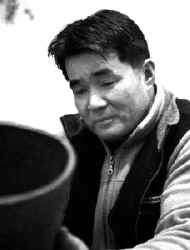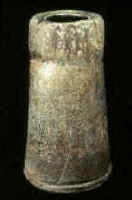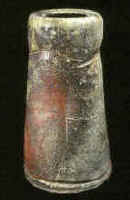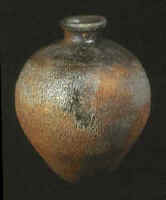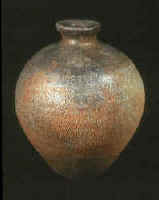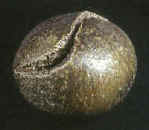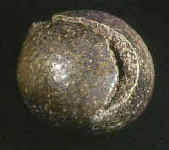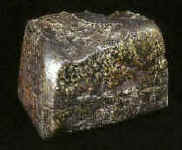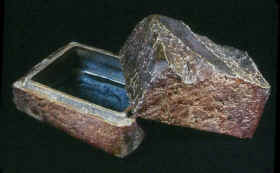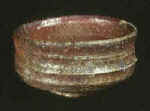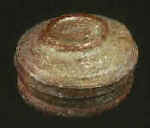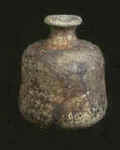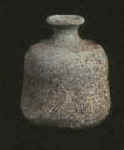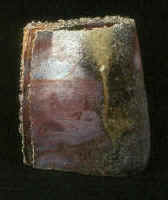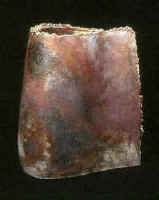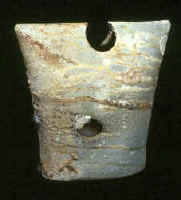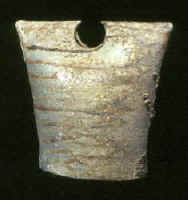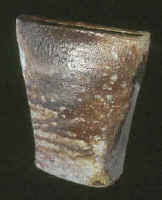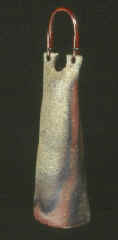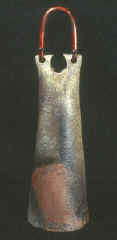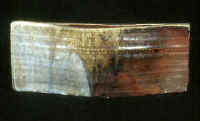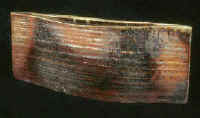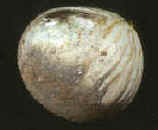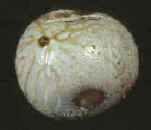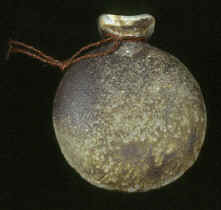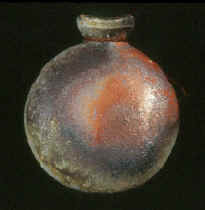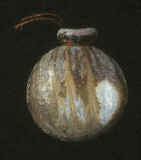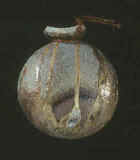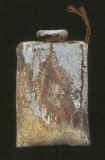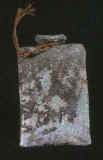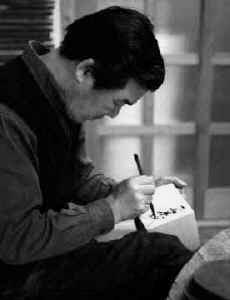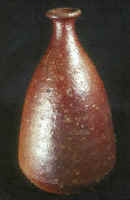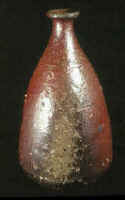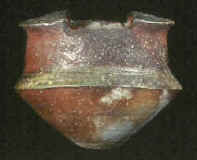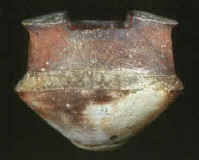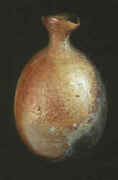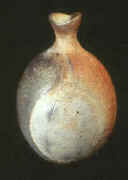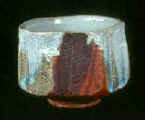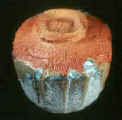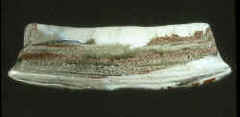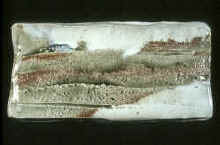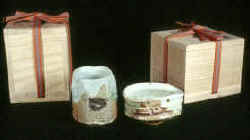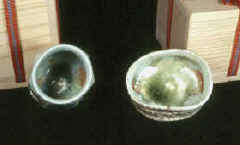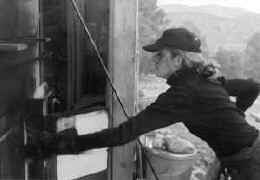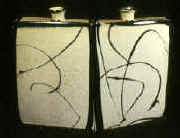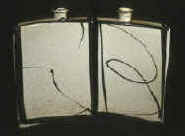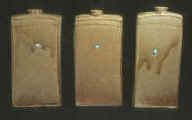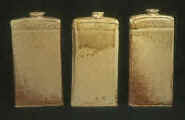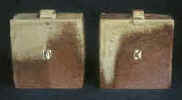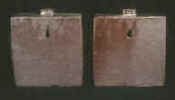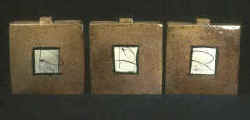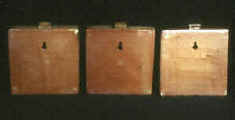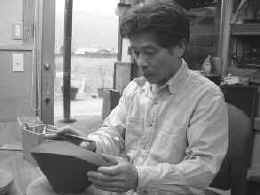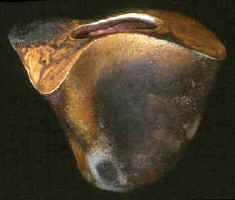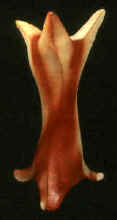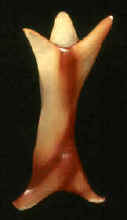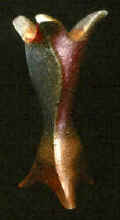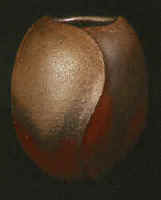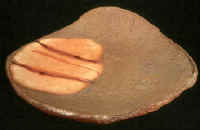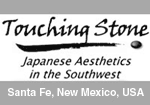
|
Evolving Traditions: Japanese Wood-fired Ceramics April 8 - May 28, 2005 Click here to see Latest Shows |
|
|
|
Kiyoharu Ichino (Tanba) Reiko Kakiuchi-Cohen (Echizen) Tadashi Nishihata (Tanba) Betsy Williams (New Mexico) George Yamashita (Bizen) |
|
Japan has produced some of the most beautiful pottery from wood-fueled kilns for over a thousand years. This exhibition shows contemporary examples of this ancient art form by five ceramic artists, four Japanese from the old pottery centers of Tanba, Echizen, and Bizen, and an American who studied ceramic in Karatsu in Japan.
|
|||||
|
Click on images to view. To order call (505)-988-8072, see Inquiry/Order |
|||||
| Kiyoharu
Ichino (Tanba, Japan)
Kiyoharu Ichino was born in 1957 in Tanba Tachikui into an extended family steeped in pottery-making tradition. When he was twenty, he moved to Seto to study pottery under a master of Akatsu-Yaki. Upon returning to Tachikui, he launched his career with the Tanba Group Kiln. In 1983, he established his own kiln and began showing in galleries all over Japan. Ichino's work emphasizes the strength and natural beauty of Tanba clay. He often leaves raw edges on his pieces to show the clay body. He has been a permanent member of The Japan Crafts Association since 1995. His work has been selected repeatedly for the prestigious juried Japan Traditional Crafts Exhibition. |
Kiyoharu Ichino, photo © Touching Stone Images |
||||
|
Kiyoharu Ichino Ancient Spirit No.4 (2 views) Vase 9.5"H x 5" x 5" Sold
|
Kiyoharu Ichino Gold Rust No.3 (2 views) Vase 9.5"H x 7.5" x 7.5" Sold
|
||||
|
Kiyoharu Ichino Two Faces of Enzo No. 6 (2 views) Vase 4.5"H x 5" x 5.5" Sold
|
Kiyoharu Ichino Heirloom (2 views) Box 4.5"H x 6" x 4.5" Sold
|
||||
|
Kiyoharu Ichino Tea Bowl No. 5 (2 views) 2.5"H x 5" x 4.5"
|
Kiyoharu Ichino Tokkuri (2 views) 4.5"H x 3.5" x 3.5" Sold
|
||||
|
Kiyoharu Ichino Edge of Purple No. 2 (2 views) Vase 9"H x 7.5" x 4" Sold
|
|||||
| Reiko
Kakiuchi-Cohen (Echizen, Japan)
Reiko Kakiuchi-Cohen's unique style can be traced back to her late husband Ben Cohen, who was the late brother of American artist Judy Chicago. Ben went to Japan in the mid 1970s to study wood-fired pottery under Shichizaemon Kitano in Echizen. Ben named his kiln "Joyous Flame", a phonetic play of the Japanese words for "Cohen". In 1989, just as his wood-fired pottery was gaining recognition, he was diagnosed with amyotrophic lateral sclerosis (Lou Gehrig’s disease). Ben and Reiko devoted their remaining time together to keep "Joyous Flame" alive. The couple held two joint exhibitions in Japan. In 1992, one month after their second show, Ben passed away. Since then, Reiko carried on the legacy of "Joyous Flame", producing stunning works that blended femininity, strength, Eastern and Western aesthetics. The show includes several examples of her works inspired by Ben's original forms. |
Reiko Kakiuchi-Cohen, photo © Touching Stone Images |
||||
|
Reiko Kakiuchi-Cohen Facing the Wind No. 2 (2 views) Vase 10"H x 10" x 4" Sold
|
Reiko Kakiuchi-Cohen Untitled No. 8 (2 views) Vase 9"H x 7" x 2" Sold
|
||||
|
|
|
||||
|
Reiko Kakiuchi-Cohen Storm No.4 (2 views) Vase 5"H x 11" x 3" Sold |
|||||
|
Reiko Kakiuchi-Cohen Butterfly No.3 (2 views) Vase 11"H x 4" x 3" Sold
|
|
||||
|
Reiko Kakiuchi-Cohen Untitled No.1 (2 views) Vase 6"H x 7" x 5" Sold
|
Reiko Kakiuchi-Cohen Twilight No.5 (2 views) Hanging Vase 6.5"H x 6.5" x 1.5" Sold
|
||||
|
Reiko Kakiuchi-Cohen Twilight No.6 (2 views) Hanging Vase 6.5"H x 6.5" x 1.5" Sold
|
Reiko Kakiuchi-Cohen Midnight No.7 (2 views) Hanging Vase 7.5"H x 4.5" x 1.5" Sold
|
||||
|
Tadashi Nishihata (Tanba, Japan) Tadashi Nishihata (b. 1948), another Tanba ceramist from a family steeped in wood-fired pottery tradition, draws inspirations from nature. His greatest contribution is rediscovery of an ancient Tanba finish, called Aka-dobe-yu (red clay glaze). In the early Edo period (1603–1867), some Tanba potters applied certain clay onto their pots to repair leakage. The patched areas turned a deep chestnut-red color after firing. Pottery with this beautiful color was made for only 30 years, after which the technique was lost for centuries. Nishihata spent more than 30 years attempting to re-create Aka-dobe-yu. In 2001, he succeeded. Another Nishihata's original finish is Hai-yu (ash glaze), created by mixing ashes from rice stalks and various types of wood, producing spectacular effects that resemble abstracted landscapes. This show includes fine examples of Nishihata's Aka-dobe-yu and Hai-yu finishes.
|
Tadashi Nishihata, photo © Touching Stone Images. |
||||
|
Tadashi Nishihata Aka-dobe-yu Vase No. 3 (2 views) 11"H x 6" x 6" Sold
|
|||||
|
Tadashi Nishihata Untitled Vase No. 1 (2 views) 7.5"H x 8.5" x 5" Sold
|
Tadashi Nishihata Untitled Vase No. 2 (2 views) 8"H x 6" x 6" Sold
|
||||
|
Tadashi Nishihata Tea Bowl No. 8 (2 views) 4"H x 4.5" x 4.5" Sold
|
Tadashi Nishihata Hai-Yu Platter No. 4 (2 views) 13.5" x 6.5" x 2"H Sold
|
||||
|
|
|
||||
|
Tadashi Nishihata Hai-Yu Sake Cups No. 6 & 7 (2 views) No. 6: 3"H x 2.5" x 2.5" Sold No.7: 2"H x 3" x 2.5" Sold
|
|||||
|
Betsy Williams (New Mexico, USA) Betsy Williams, a graduate from St. John’s College in Santa Fe, studied in Japan for 41/2 years with Yutaka Ohashi in Karatsu City in northwest Kyushu, famous for its tea ceremony ware. Williams' work is based on the Karatsu tradition, but driven by her own vision. One of her themes is a shape called 'dachibin', a traditional hip flask from Okinawa. Its multi-faceted surfaces offer much opportunities as a 'canvas' for artistic expression. Many of her recent pieces are in pairs or sets, speaking to a relationship between individual parts of a larger whole. |
Betsy Williams, photo © courtesy of the artist |
||||
|
Betsy Williams Reflection (Front & back views) Double flask 7"H x 10" x 1.5"
|
Betsy Williams Three Some (Front & back views) 3-pc set w/ turquoise inlay 6"H x 3" x 1"
|
||||
|
Betsy Williams X & O Universal Language (Front & back views) 2-pc wall mounted set 5"H x 5" x 2" Sold
|
Betsy Williams Conversation (Front & back views) 3-pc set wall mounted set 5.5"H x 5.5" x 2"
|
||||
|
|
|||||
|
George Yamashita (Bizen, Japan) Born in Tokyo in 1947, Joji (George) Yamashita went to Canada in 1967 to study contemporary art at the Vancouver Art School. In 1971, he returned to Japan and studied traditional Bizen pottery with Jun Isezaki in Inbe, Okayama Prefecture. Seven years later he established his own kiln in Inbe. Taking advantage of his western art training, Yamashita was among the first Bizen artists to merge traditional wood-firing techniques and innovative sculptural work. His work has had major impact on other ceramic artists. Among his former pupils are some of the most impressive contemporary ceramists, including Hiroyuki Wakimoto and American Jeff Shapiro. The current show includes five outstanding pieces that epitomize Yamashita's innovative style. |
George Yamashita, photo © courtesy of the artist |
||||
|
|
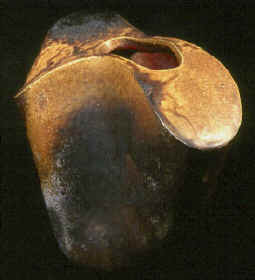 |
||||
|
George Yamashita Aurora (Front & side views) Vase 10"H x 14" x 7" Sold
|
|||||
|
George Yamashita Dancer No. 1 w/ Hidashuki firemarks (2 views) 13"H x 6" x 6"
|
George Yamashita Dancer No. 2 w/ Goma firemarks (2 views) 13"H x 6" x 6"
|
||||
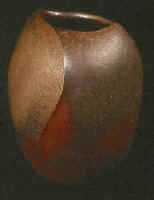 |
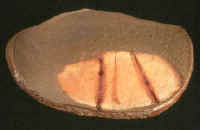 |
||||
|
George Yamashita Ridge Curve (2 views) 10.5"H x 9" x 8" Sold
|
George Yamashita Sunset Reeds (2 views) 13"H x 13" x 1"H Sold
|
||||

